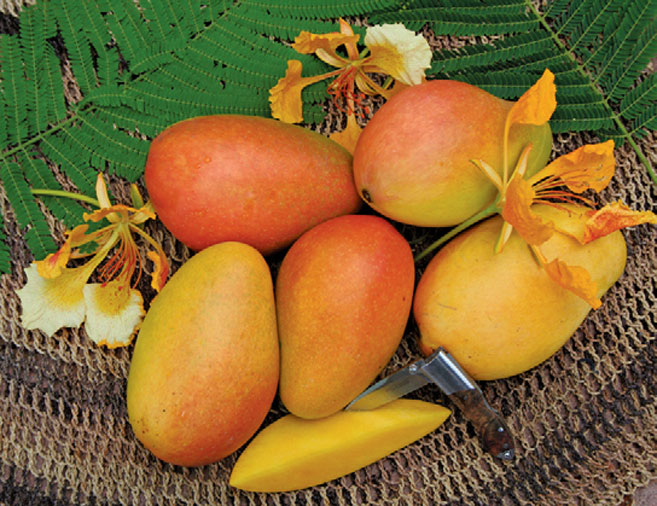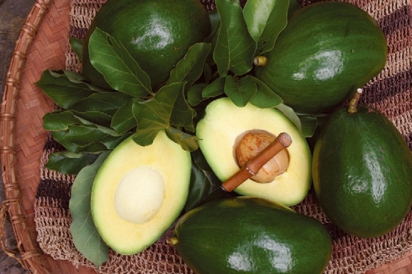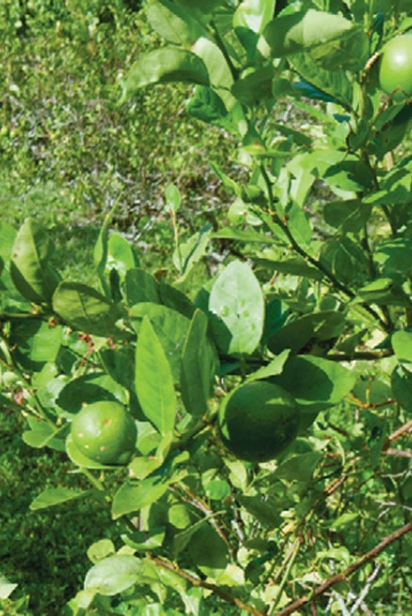Demise of the Big Three (Fruit) in South Florida?
Another night has passed. Newly shattered dreams are manifested in the scattered frost topping the weeds and grass in the edible garden. Beautiful, yes, but a stiff reminder of where we live and what we and our edible plants must endure.
Each year it’s the same. We hope for warm weather; we pray for a quiet hurricane season. But at the end of the day, there’s little we can do. There will be frosts and freezes and hurricanes. We grew many plants that succumbed to the cold and the wind, but there are those that survived the test of time. They survive and even flourish under the constant pressure of Mother Nature. However, a perfect storm of weather, pests and diseases is now threatening their place in our edible gardening future. This is their story.
BIG THREE
For more than a century, the mango, avocado and lime have been our big three of edible gardening. Brought in as unproven commodities with solid track records in their native lands, they struggled at first to adapt to South Florida. The soils, the people and the weather were pitted against them. We are perched upon a calcareous sheet of rock; few Americans had ever tasted these fruit; and our winters can be punishing to tropical and subtropical crops. But, after a few growing seasons and trial by fire, they became champions of our landscape. We had mangos, avocados and limes every year, and not just for the home gardener – the big three proved themselves exceptional at large-scale agriculture. New orchards and export industries sprung up and survived over the decades. The mango, lime and avocado proved themselves to South Florida and the world.
It is no small feat to thrive and produce a crop each year and to have such lasting agricultural success. After a few decades of breeding and selection, mangos were producing consistent harvests here, in spite of the freezes and the occasional cyclone. Avocados and limes exerted their influence in Homestead, but all three found their ways into our backyards and onto our tables. Late spring and summer offered ample harvests of the big three South Florida crops. Their growth and production was so natural, in fact, that we began to take their success for granted. We were the champions of diversity and quality. We had it all. Then the challenges came.
DISASTERS STRIKE
Limes were hit by a series of blows, including leaf-miner insects that arrived on the winds of an Atlantic hurricane, and bacterial canker that came in a dried leaf from Asia. Our own Department of Agriculture entered our edible gardens bent on destruction of limes and citrus. They were acting to save the commercial Florida citrus industry, but the destruction was widespread and thorough. The result was a knockout blow to limes. And just as the lime was struggling to regain its feet, citrus greening, perhaps the most devastating disease of them all, was added to the mix. Now we await a solution to the devastation. Will the limes that flourished for a century disappear from our landscapes? For the home gardener, relying on imported limes is cruel and intolerable. We wait for genetics, nutrition, even prayer to restore our limes.
The avocado went along for many generations as a champion of South Florida edible gardening and agriculture. Freezes, floods and hurricanes took their shots at the avocado, but the thick-skinned American standard held firm. The commercial industry had its ups and downs, but in our backyards the avocado always had its place. Then came laurel wilt and sudden avocado death, a fungus disease spread by a rather insignificant beetle. The results are rapid and devastating. Our once-proud symbol of edible gardening began to hobble, weakened by the tiny pest and disease. As it moves south, laurel wilt has killed. As with our beloved lime, the avocado’s survival may depend on genetics or cultural practices in the home garden and commercial orchards. The avocado should not go down without a fight – we owe the avocado that much.
The mango, knocked to its knees by Hurricane Andrew in 1992, has yet to recover its commercial prowess. Worldwide, people began to question our place as the capital of the mango; they wanted to marginalize the role of South Florida in the modern mango and forget about the decades of breeding and selection and flavor. The world as changed too, toward smaller yards and smaller trees – different flavors and looks. But the mango has remained in our hearts and our home gardens.
For the mango, the prognosis is bright. We have endless varieties for the home garden, size control, and love, appreciation and an obligation to the mango. In our homes and heart, the mango endures and increasingly in the commercial realm the mango rises to the top.
We must not forget about the mango, nor the lime or the avocado. Their history is our South Florida legacy.






